Interesting Facts About Maine You Never Knew
Did you know that Maine boasts the longest coastline in the U.S. at 3,478 miles and over 4,600 islands? You'll be surprised to learn that only 15 of these islands are inhabited year-round. Maine's rich maritime heritage includes 65 iconic lighthouses, with West Quoddy Head Light marking the easternmost point in the U.S. The state's thriving lobster industry produces 90% of the nation's supply, harvesting about 40 million pounds annually. Maine's unique cultural traditions, like the Rockport Donut Festival, celebrate its culinary history. With 80% forest coverage and the highest moose population in the contiguous U.S., Maine's natural wonders are truly enchanting. There's much more to uncover about this fascinating state.
This post may contain affiliate links. If you make a purchase through these links, I may earn a commission at no additional cost to you. Additionally, portions of this post may be generated using artificial intelligence (AI) technology. While we strive for accuracy, please be aware that AI-generated content may not always be perfect and should be fact-checked when necessary.
The Spatula Scoops
- Maine boasts the longest coastline in the U.S. at 3,478 miles and over 4,600 islands, with only 15 inhabited year-round.
- The state is home to 65 iconic lighthouses, including West Quoddy Head Light marking the easternmost point in the U.S.
- Maine produces 90% of the U.S. lobster supply, with approximately 40 million pounds harvested annually by 4,500 active lobstermen.
- The state has the largest moose population in the contiguous U.S., estimated at up to 78,000 moose.
- Maine has the highest percentage of residents with French Canadian roots in the U.S., influencing local dialect and culture.
Maine's Unique Geographical Features
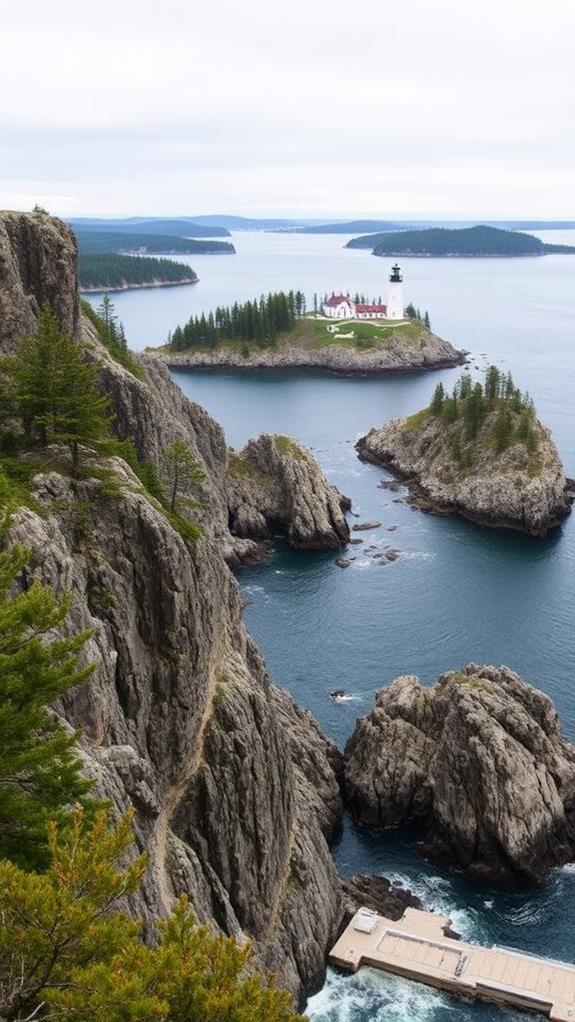
Maine's rugged beauty is evident in its diverse geographical features. You'll find the longest coastline in the U.S. here, stretching over 3,478 miles. This extensive shoreline is dotted with numerous islands and inlets, creating a paradise for coastal explorers. In fact, Maine boasts over 4,600 islands, with about 1,200 larger than one acre. However, only 15 of these islands are inhabited year-round, highlighting the state's remote and untouched nature.
Inland, you'll discover that Maine is a haven for outdoor enthusiasts. With over 80% forest cover, the state offers abundant opportunities for hiking, camping, and wildlife observation. Mount Katahdin, standing at 5,268 feet, is Maine's highest peak and marks the northern terminus of the Appalachian Trail. The state's diverse ecosystems, including numerous lakes and rivers, contribute to its rich biodiversity. You can explore this natural splendor in Acadia National Park, one of the oldest national parks in the United States. Known for its stunning landscapes, Acadia showcases Maine's unique blend of coastal and mountainous terrain, providing a wealth of outdoor recreational opportunities for visitors and residents alike.
Rich Maritime Heritage
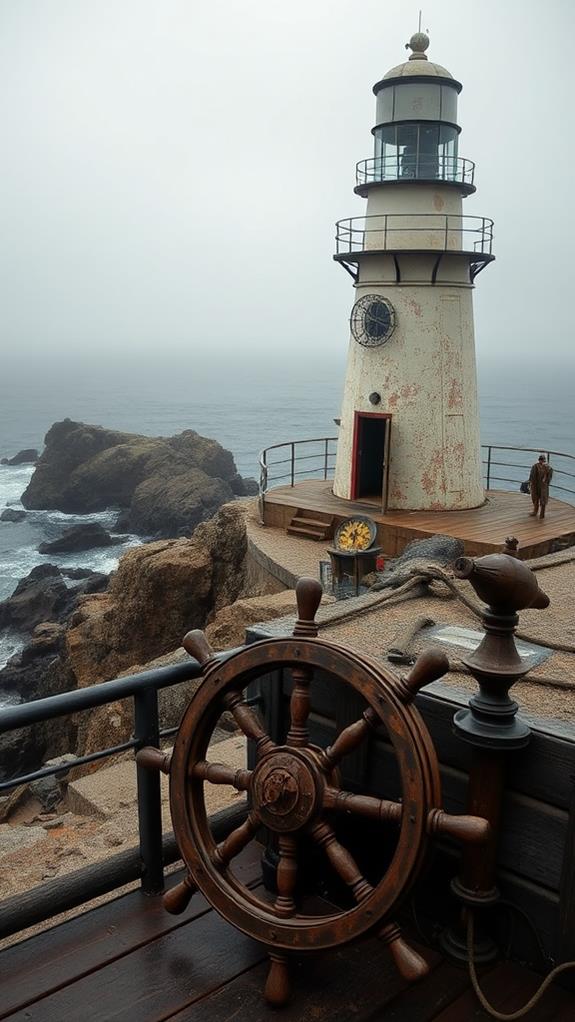
Maine's rich maritime heritage is evident in its 65 iconic lighthouses, including the easternmost U.S. point at West Quoddy Head Light. You'll find the state's thriving lobster industry produces a whopping 90% of the nation's supply, with about 40 million pounds harvested annually. The Maine Maritime Museum showcases the state's historic shipbuilding legacy, offering insights into both traditional and modern maritime practices that have shaped Maine's coastal culture.
Iconic Lighthouses of Maine
Dotting the rugged coastline of Maine, 65 iconic lighthouses stand as sentinels of the sea, guiding ships and preserving the state's rich maritime heritage. You'll find Maine has one of the highest concentrations of lighthouses in the U.S., each with its own unique story and charm.
Among these beacons, you'll discover the West Quoddy Head Light, proudly marking the easternmost point of the United States. It's a must-see for lighthouse enthusiasts and history buffs alike. Another gem is Cape Neddick Light, affectionately known as "Nubble Light." It's one of the most photographed lighthouses in the country, perched on a small rocky island that's picture-perfect.
For a truly unique experience, visit the Rockland Breakwater Light. You can walk the 4,300-foot breakwater to reach this lighthouse, completed in 1902.
| Lighthouse | Location | Notable Feature |
|---|---|---|
| West Quoddy Head | Easternmost point | Striped tower |
| Cape Neddick | Rocky island | Most photographed |
| Rockland Breakwater | End of breakwater | 4,300-foot walk |
These iconic lighthouses aren't just navigational aids; they're cultural landmarks that embody Maine's maritime heritage. When you visit, you'll gain a deeper appreciation for the state's coastal history and the essential role these structures play in safeguarding sailors.
Thriving Lobster Industry
There's no denying the importance of lobster to Maine's identity and economy. You might be surprised to learn that this small New England state produces a staggering 90% of the U.S. lobster supply. Each year, Maine's lobstermen harvest around 40 million pounds of these prized crustaceans from the state's extensive coastline.
The lobster industry is a vital economic driver for Maine, supporting approximately 4,500 active lobstermen. When you visit the state, you'll quickly notice how lobster has become a centerpiece of Maine's culinary scene. You can indulge in fresh lobster rolls and hearty chowders, showcasing the unparalleled quality of Maine's seafood.
If you're interested in experiencing the state's rich maritime heritage, you'll want to explore historic fishing villages or visit the Maine Maritime Museum. These attractions offer insights into the culture and history surrounding the lobster industry. For a more festive experience, you can attend the Maine Lobster Festival in Rockland, where thousands gather annually to celebrate this iconic seafood. It's clear that Maine's thriving lobster industry is deeply woven into the fabric of the state's identity and economy.
Historic Shipbuilding Legacy
A rich maritime heritage defines Maine's historic shipbuilding legacy, dating back to the early 17th century. You'll find that Maine's shipbuilding history began with the construction of the Pinnace Virginia in 1607, marking the start of naval engineering in U.S. history. As you explore the state's past, you'll discover its significant role in producing clipper ships and other sailing vessels during the 19th century, contributing to the booming maritime trade.
Maine's shipbuilding techniques were essential for sustaining local economies and livelihoods in historic fishing villages. You can witness this rich heritage at the Maine Maritime Museum, which showcases exhibits on the construction and design of iconic vessels. The museum offers a glimpse into the state's maritime past and its impact on the region's economy.
Don't miss the Rockland Breakwater, built in 1894. It's a notable example of engineering achievement and serves as a landmark in Maine's maritime construction history. This structure emphasizes the state's shipbuilding importance and its enduring impact on the coastal landscape. Maine's shipbuilding legacy continues to shape its identity and attract visitors interested in maritime history.
Wildlife and Conservation Efforts
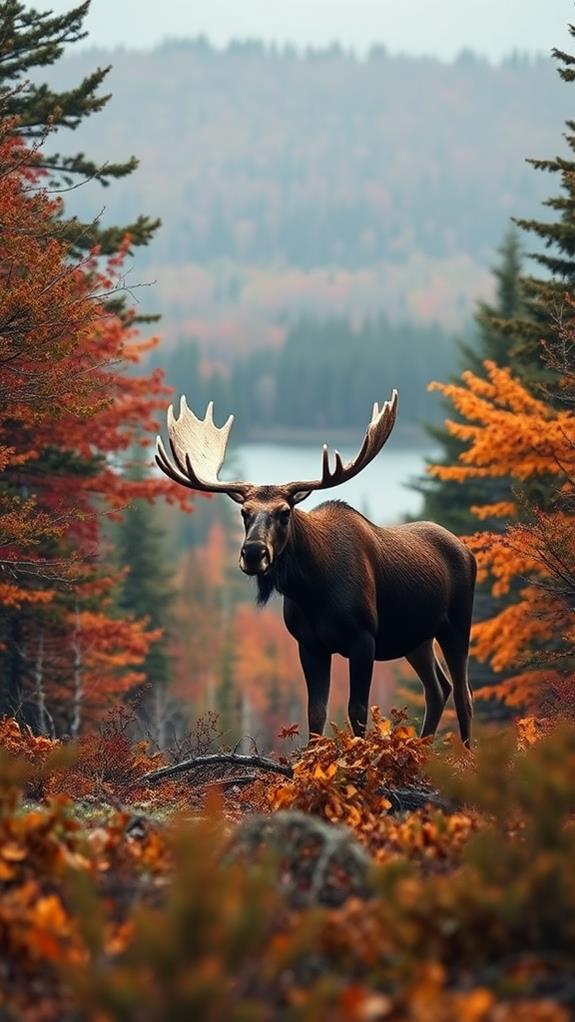
Maine's rich biodiversity and vast wilderness areas make it a haven for wildlife enthusiasts and conservationists alike. You'll find an impressive array of species thriving in the state's diverse ecosystems, from dense forests to coastal regions. Did you know that Maine boasts the largest moose population in the lower 48 states? With up to 78,000 moose roaming its wilderness, you're more likely to spot these majestic creatures here than anywhere else in the contiguous U.S.
Conservation efforts in Maine are extensive and multifaceted. The state's commitment to wildlife protection is evident in its numerous programs aimed at preserving endangered species and their habitats. You'll find initiatives focused on restoring environments for creatures like the Piping Plover and eastern Mexican spotted owl. Maine's dedication to conservation extends to its marine ecosystems, with research institutions studying and safeguarding coastal habitats. To maintain ecological balance, wildlife management assessments are conducted annually, ensuring healthy populations of deer, bear, and various bird species. With over 80% of Maine's land covered in forests, you're witnessing a state that prioritizes biodiversity and habitat preservation on a grand scale.
Cultural Quirks and Traditions

As you explore Maine's cultural landscape, you'll encounter a rich tapestry of quirks and traditions that set the state apart. You might be surprised to learn that Maine is home to the Rockport Donut Festival, which celebrates the state's unique contribution to donut history—the invention of the donut hole by a local sea captain. This festival, along with other distinctive events like Maine Maple Sunday, showcases the state's blend of maritime heritage, agricultural traditions, and innovative spirit that continues to shape its cultural identity.
Unique Island Life Traditions
Island life in Maine offers a tapestry of unique traditions shaped by isolation and rugged coastal environments. With over 4,600 coastal islands, Maine's island communities have developed distinct cultural identities that reflect their maritime heritage. Places like Vinalhaven and Mount Desert Island showcase these unique traditions, which are deeply rooted in the islanders' connection to the sea and their surroundings.
You'll find that environmental stewardship plays a significant role in island life. Many residents participate in the Maine Island Trail Association's events, such as annual clean-up days. These activities foster a strong sense of community and commitment to preserving the islands' natural beauty.
The isolation of island life has also contributed to the development of a regional dialect unique to Maine. You might notice islanders dropping the 'R' sound in their speech, a linguistic quirk that sets them apart from mainland residents. This distinct accent is just one aspect of the rich cultural tapestry you'll encounter when exploring Maine's island communities.
As you visit these coastal enclaves, you'll discover a way of life that's been carefully preserved and adapted to the challenges of island living, creating a truly one-of-a-kind experience.
Donut Hole Origin Story
The humble donut hole, a beloved treat across America, has its roots firmly planted in Maine's maritime history. You might be surprised to learn that this culinary innovation originated in Rockport, Maine, thanks to a resourceful sailor named Captain Hanson Gregory. In 1847, while on his lime-trading voyages, Gregory invented the donut hole to guarantee even cooking of his pastries.
Before Gregory's invention, donuts often had greasy, uncooked centers. His ingenious solution was to punch out the middle, creating the ring shape we're familiar with today. This simple modification revolutionized donut-making, leading to better-cooked and more enjoyable treats.
As industrialization swept across America, the popularity of donut holes grew exponentially. They became a staple in American culture and cuisine, particularly in Maine. The state celebrates its contribution to this culinary narrative with the annual Rockport Donut Festival. This event honors Maine's maritime culture and its influence on American food traditions. The donut hole's story is a reflection of the ingenuity born from Maine's seafaring heritage, forever linking the state to this iconic pastry.
Distinctive French Canadian Heritage
While donuts are a beloved part of Maine's cultural landscape, the state's French Canadian heritage adds another layer of richness to its tapestry. You'll find that Maine has the highest percentage of residents with French Canadian roots in the U.S., a legacy of immigration waves during the 18th and 19th centuries. This influence is particularly evident in the St. John Valley, a primarily French-speaking region in northern Maine.
You'll notice the impact of this heritage in various aspects of Maine's culture. The state's unique dialect incorporates French-derived words and phrases in everyday conversations. When it comes to cuisine, you can't miss trying poutine, a French Canadian dish of fries topped with cheese curds and gravy. Maine's culinary scene also features other Acadian specialties that highlight its French roots.
Throughout the year, you'll have opportunities to experience this vibrant heritage firsthand. The Acadian Festival in the St. John Valley and the Festival de Joie are cultural festivals that celebrate Maine's French Canadian history through traditional music, dance, and food. These events offer a glimpse into the enduring influence of French Canadian culture on Maine's identity.
Historical Milestones and Achievements
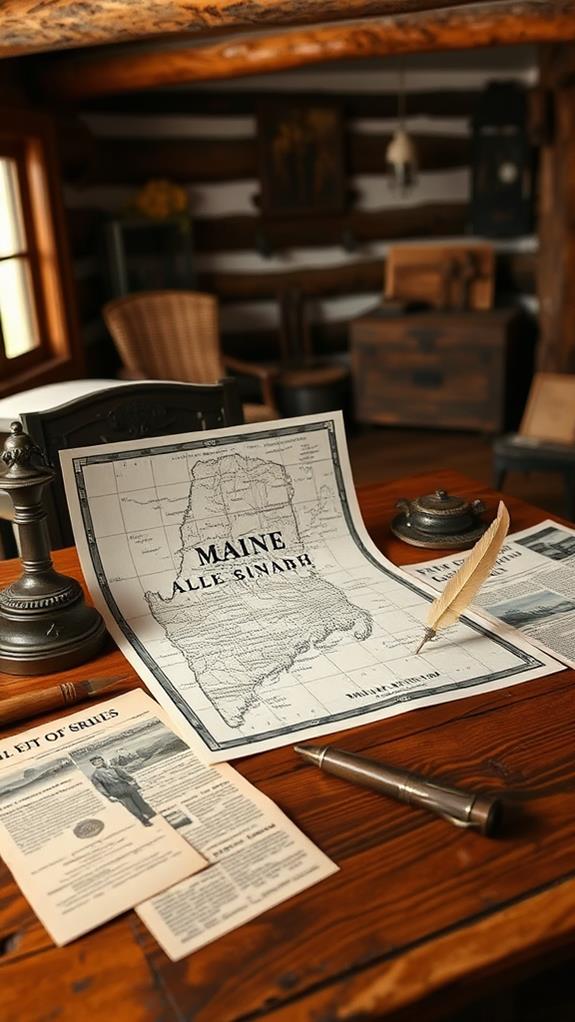
Maine's rich history is peppered with groundbreaking milestones and notable achievements. You might be surprised to learn that this northeastern state played a significant role in shaping the nation's early days. For instance, Maine became the 23rd state in 1820 as part of the Missouri Compromise, balancing slave and free states. But its historical significance dates back even further.
Did you know that York, chartered in 1641, is recognized as the first city in the United States? Or that Maine witnessed the first naval battle of the Revolutionary War off Machias in 1775? These events showcase Maine's early involvement in the country's formation and fight for independence.
| Year | Achievement | Significance |
|---|---|---|
| 1607 | Pinnace Virginia construction | Beginning of U.S. naval engineering |
| 1775 | First Revolutionary War naval battle | Early involvement in independence |
| 1851 | First state prohibition on alcohol | Leader in temperance movement |
Maine's pioneering spirit continued into the 19th century when it became the first state to enact prohibition on alcohol in 1851, long before the national Prohibition era. These historical milestones demonstrate Maine's enduring impact on American history and governance.
What Makes Mali’s Facts Comparable to Maine’s?
Mali and Maine, despite being worlds apart, share intriguing connections through climate diversity, history, and culture. By exploring interesting facts about mali, such as its ancient trading centers and vibrant traditions, alongside Maine’s historical maritime legacy, one can uncover parallels highlighting unique but comparable aspects of these distinct regions.
Economic Pillars and Industries
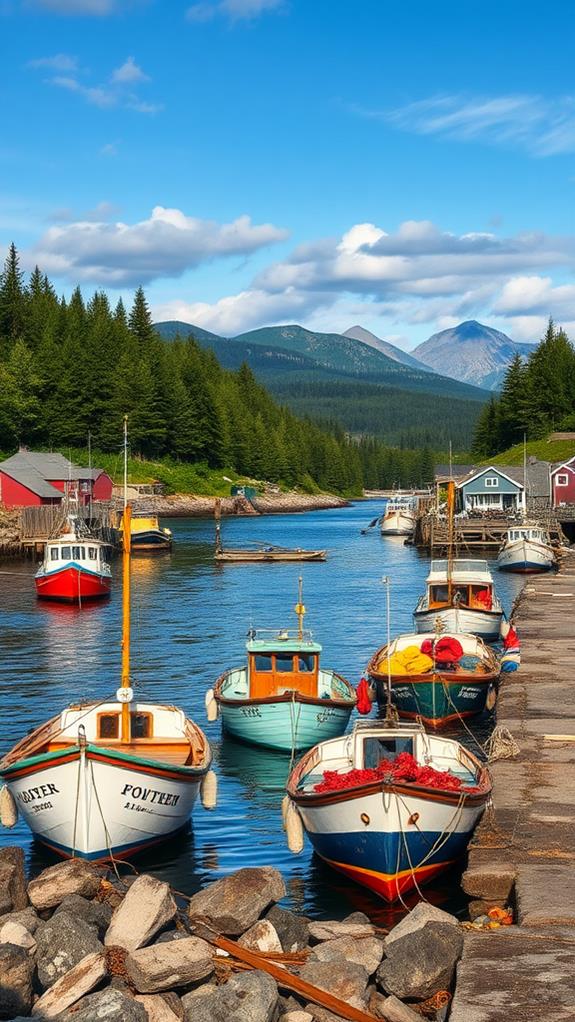
You might be surprised by the diverse economic pillars supporting Maine's prosperity. The state's economy thrives on its natural resources and unique industries. Maine dominates the U.S. lobster supply, producing a whopping 90% of the nation's catch. This translates to about 40 million pounds of lobster annually, making it a vital driver of the state's economy.
In the agricultural sector, Maine shines as the country's leading producer of wild blueberries, accounting for 99% of the national total. But it's not just about seafood and fruit. You'll find Maine's economic landscape peppered with craft breweries, boasting the highest number per capita in the nation. With 36 breweries per 100,000 residents, the craft beer industry considerably contributes to the state's economy.
Historically, Maine was known as the toothpick capital of the U.S., once producing 95% of the country's supply. While this industry has declined, the state's diverse economic contributions continue. Maine's rich mining heritage, particularly in zinc and copper extraction, further shapes its economic profile. These varied industries collectively form the backbone of Maine's robust and multifaceted economy.
Frequently Asked Questions
What Is a Unique Fact About Maine?
Did you know that Maine is a state of firsts? You'll be surprised to learn that it's the only U.S. state with a one-syllable name. But that's not all. Maine boasts the longest coastline in the country, stretching an impressive 3,478 miles. It's also America's lobster capital, producing 90% of the nation's supply. If you're a blueberry fan, you'll be interested to know that Maine accounts for 99% of the country's wild blueberry production.
Why Is Maine so Famous?
Maine's fame stems from its natural beauty and unique offerings. You'll find it's renowned for its picturesque coastline, dotted with iconic lighthouses. It's the nation's top producer of blueberries and lobster, contributing greatly to its culinary reputation. Acadia National Park draws millions of visitors annually, showcasing Maine's stunning landscapes. The state's rich maritime history, including its role in the Revolutionary War, adds to its allure. As "Vacationland," Maine's blend of outdoor activities, arts, and cuisine attracts millions of tourists each year.
What Is Great About Maine?
You might think Maine's just a cold, remote state, but you'd be wrong. It's a paradise for nature lovers, with Acadia National Park offering 120+ miles of hiking trails and stunning landscapes. You'll find the longest coastline in the continental U.S., dotted with 65 iconic lighthouses. Maine's also a seafood lover's dream, producing 90% of the country's lobster. Don't forget the wild blueberries and vast forests covering 80% of the state, perfect for outdoor activities year-round.
What Is a Fun Fact About Portland Maine?
Did you know that Portland, Maine, is home to the United States' oldest lighthouse? The Portland Head Light, commissioned by George Washington himself in 1791, stands as a symbol of the city's rich maritime heritage. You'll find this iconic beacon perched on the rocky coastline, guiding ships safely to shore. It's not just a historical landmark; it's a proof of Portland's enduring connection to the sea and a must-visit spot for history buffs and photography enthusiasts alike.





